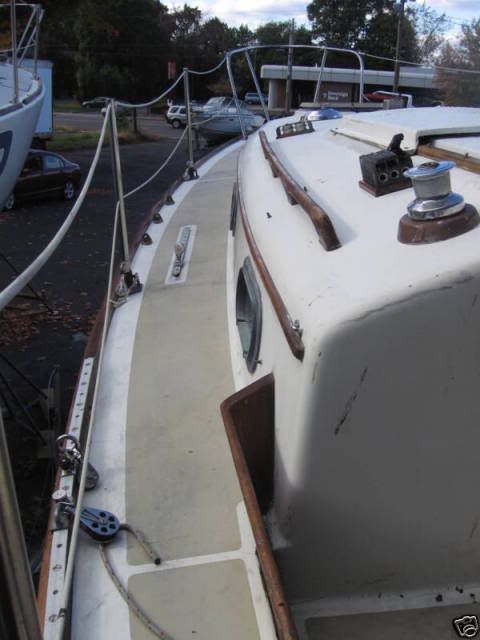I remember 2-3 Cape Dorians on this board installed a main winch on their coach roof. I think Warren Kaplan did so on his Cape Dory 27 and possibly our Commodore Bill Slater ("Barfwinkle") did so on his Cape Dory 25D. Unfortunately, I was unsuccessful at finding their posts, photos, discussion, etc. Not much of a surprise there.
I believe my CD 25D already has a plate under the mast with a few holes for attaching blocks. I am not sure exactly what it is called. I am also not sure of the make or model of this plate but it is similar to the one I remember I saw on a photo submitted by Warren K.
Rigrite offers one they call a "Halyard Organizer Plate".
http://www.rigrite.com/Spars/SparParts/Mast_hinges.html
I also remember that Warren (and possibly Barfwinkle) installed a "turning block organizer" (
So, my questions.
1. Are there any reasons I should not install a cabin roof main halyard winch so that I can raise and lower the main from the safety of the cockpit
2. Is this an installation I can do myself or should I hire a pro
3. What specific brand/make/model of gear should I buy
Halyard plate organizer (I have one but I am not sure of suitability for this)
Turning block organizer (not sure of correct name)
Main halyard winch. I assume I want this to be a self-tailing winch.
I very much appreciate any and all comments, suggestions, etc.
Thank you.

